An emerging trend in interior design reframes the built environment as a way to help people flourish.
Vertical green walls, a landscaped courtyard, interior spaces bathed in natural light, finishes in warm hues and furnishings in soft colors—all these might describe a modern office building, but they’re elements of Strawberry Hill Campus, an inpatient facility devoted to adult mental and behavioral health of the University of Kansas Health System.
What was once a dreary government building is now a sanctuary that promotes healing.
CannonDesign, an architecture and engineering firm, designed the Strawberry Hill Campus to support people’s psychological and social needs, an emerging trend in interior design called neuroaesthetics. “We design every mental health project with a focus on the human experience,” says Abbie Clary, health practice director at CannonDesign. “We believe creating a beautiful building is the baseline, and then [we] work to layer in considerations related to care and staff and patient well-being.”
CannonDesign’s approach is part of a growing trend in mental health architecture: designing spaces based on neuroaesthetics to improve mental processes.
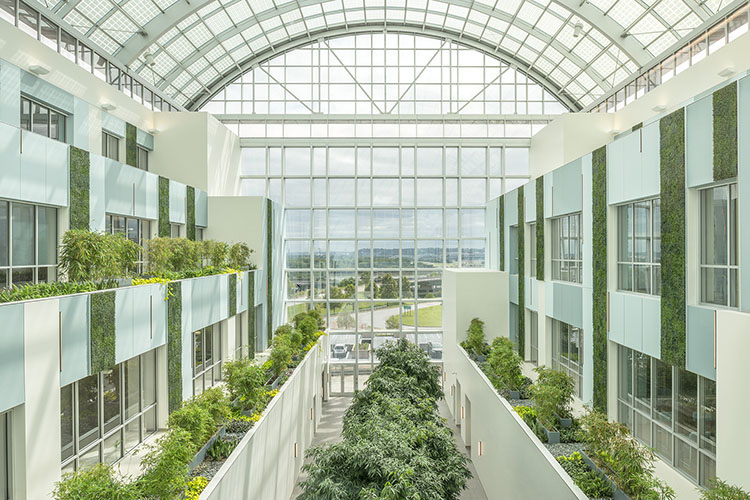
The brain and the built environment
Neuroaesthetics is defined as “the cognitive neuroscience of aesthetic experience.” It’s a field that seeks to understand the neural basis behind people’s experiences of aesthetics, extending beyond beauty and art to the built environment.
In some ways it’s simple. Architecture and design elements can elicit specific cognitive and emotional responses. Curved contours, for instance, are perceived to be more pleasant than rectilinear contours, activating part of the brain’s reward system. In other ways, because it’s the brain we’re talking about, neuroaesthetics can be just as complex as any other area of neuroscience.
Today, mental health architecture is placing recovery at the center of institutional design goals instead of control.
“You take in your environment through all of your senses, and different senses activate different areas of your brain,” says Susan Magsamen, executive director of the neuroaesthetics initiative International Arts + Mind Lab, a program at the Pedersen Brain Science Institute at the Johns Hopkins University School of Medicine. “All of these sensory experiences add up in the brain and body, whether you are consciously aware of this or not. We are constantly sensing and perceiving our environments, and our physiology responds to the spaces we inhabit.”
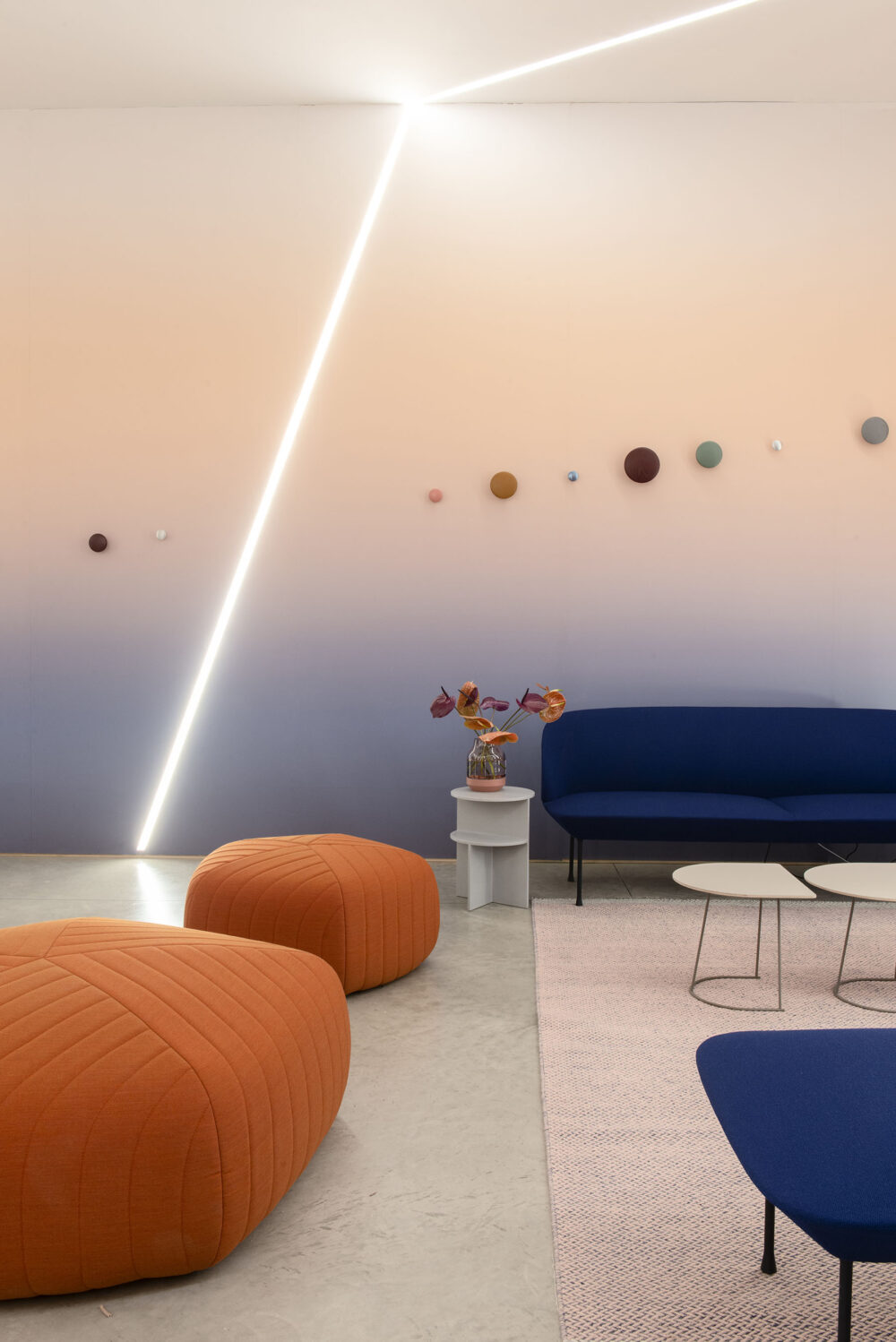
Designing for mental well-being
Employing neuroaesthetic principles is more radical than putting a few potted plants and some warm-colored walls into a traditionally drab mental health facility. It’s a deliberate rethinking of institutional spaces, whose dark corridors and dead ends reinforce their bleakness.
“Decades ago, mental health facilities were designed as places to be feared,” says Alison Leonard, mental and behavioral health practice leader at CannonDesign. “They were located on the edges of cities, often behind gates or fencing, isolated from the larger community. This design approach amplified stigma around mental health and did not help patients.”
Today, mental health architecture is placing recovery at the center of institutional design goals instead of control. For instance, the acute psychiatric inpatient units at Dandenong Hospital in the Australian city of Melbourne have wide corridors and a layout that flows through landscaped courtyards. This could be beneficial for people with dementia who tend to wander.
“What often happens in facilities for people with dementing illnesses is that they’re put in locked doors, which ends up frustrating them,” says Anjan Chatterjee, founding director of the Penn Center for Neuroaesthetics at the University of Pennsylvania. “One way to deal with that is to have navigational paths where they remain safe. You can have circular paths that come to the same set of entrances or interior courtyards where people can walk through.”
Colors could also help with wayfinding. “Having numbers for rooms doesn’t make sense for people with memory problems. You’re more likely to do well by them if the environments are color-coded and rooms are indexed by personal mementos,” Chatterjee says.
Meanwhile, the many large, sweeping windows at Strawberry Hill Campus flood it with natural light and provide views toward the Kansas City skyline. Windows inside mental health facilities create visual connections to the outside world, reducing feelings of isolation. They also allow people to survey the scene safely before making their way to a space of their choice.
“Having good lines of sight and prominent landmarks help orient people, while exposure to natural light keeps people’s circadian rhythms entrained,” Chatterjee says.
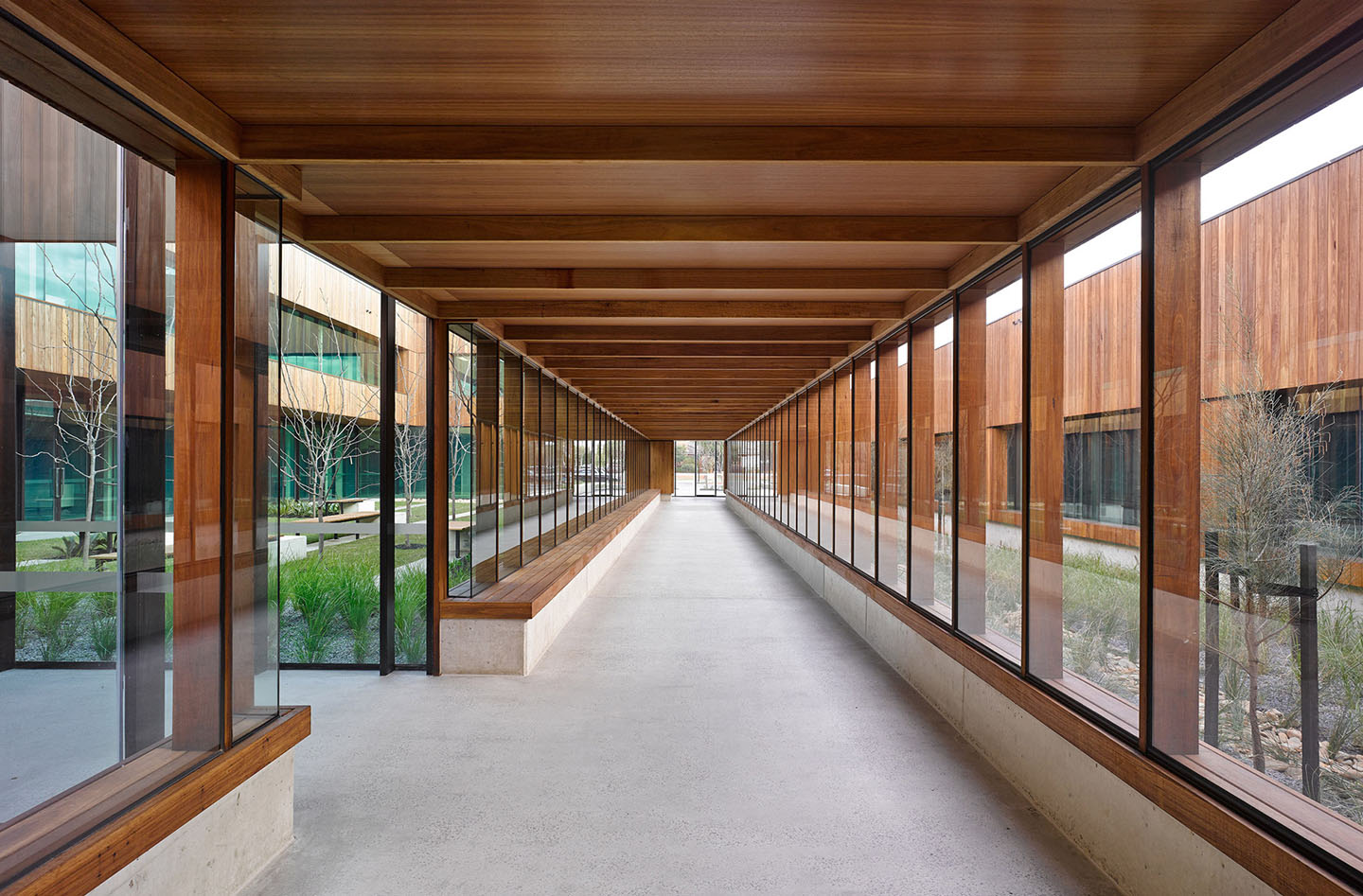
Such design elements are informed by an idea that comes from the field of environmental psychology called prospect and refuge. “What that means is you have good lines of sight and you’re not closed in, and at the same time, the space feels safe,” Chatterjee says. “Those general parameters that probably evolved from our response to the natural environment continue to apply when you’re in the built environment.”
Built to help people flourish
At Tiaho Mai, a recently renovated mental health unit in Auckland, New Zealand, different spaces—including private rooms; low-stimulus suites with soft lighting, neutral colors and reduced noise levels; open-plan therapy spaces; and shared communal areas—give people the freedom to choose which space to occupy based on their mental state. But that’s sometimes easier said than done.
“You’re not just designing for one type, and having a cookbook approach doesn’t make sense,” Chatterjee says. “People who are anxious, for example, tend to be more easily overwhelmed by a lot of bright colors, whereas these can help uplift people on the depressive side.”
He notes that anxiety and depression are not static conditions, and they affect people differently at certain times of day. For example, people who are depressed often feel their absolute worst in the morning. Having a variety of built spaces designed to address that reality can help.
“You should have areas that are more calming and areas that are more stimulating and let people move to where they’re going to be most comfortable,” says Chatterjee. “Try to think of the built environment as a way to help people flourish.”
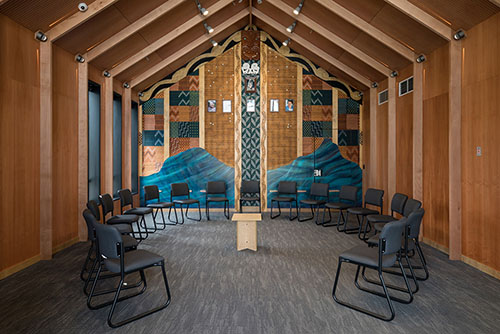
Architects might find this tailored approach to designing mental health facilities challenging. While applying neuroaesthetics in mental health architecture can be beneficial, these benefits may not be universal.
“Design preferences are personal. What you and I like and respond to can be completely different and is dictated by our genetics, conditioning and past experiences,” Magsamen says. “There isn’t a one-size-fits-all solution for mental health facilities.”
Another hurdle is balancing aesthetics with safety. When designing windows, for example, CannonDesign takes an approach that’s a far cry from the old iron-bar prison aesthetic of the bedlam asylums of old. But even as they consider how their windows bring in natural light and offer glimpses of outside beauty, they take security into account, applying special precautions to increase the durability of their windows and prevent patients from eloping through them. Similar considerations go into every aspect of neuroaesthetic design.
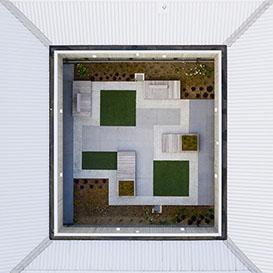
“Finding furniture, designing solutions, and creating spaces that ensure patient dignity and humanity at the same time as safety can be hard, but it’s critical and necessary and pushes us to be more creative,” Leonard says.
Meeting these challenges in mental health architecture requires designing not only with the human brain in mind but with human behavior as well. In addition to form and function, architects need to consider the people they’re designing for and the ways in which these people interact with the spaces they inhabit. A study by Chatterjee and his team, for example, found that design students cared more about a space’s coherence (how well-organized it was), while hominess (warmth and comfort) mattered more for participants with autism spectrum disorder.
“In the case of mental illness, patients throughout history have been shunned and shut away in sterile and dehumanizing environments,” Magsamen says. “But what if they had more agency and input on the design of their care, and we didn’t just assume we know what’s best? What if we had better tools or avenues to elicit their feedback?”
Technology can help develop these tools, enabling architects and neuroscientists to observe how the brain and body respond to different design choices. “Brain imagery using fMRI and biomarker tools have taken off over the past decades. They let us peer under the hood and see what’s going on as we engage with different spaces,” says Magsamen. “But we couldn’t just plug people into a big MRI scanner and get a true understanding of their experiences of spaces. They need to be able to move around and engage with the spaces we are evaluating.”
Magsamen says the field has embraced mobile brain/body imaging (MoBI) technology, which involves recording brain activity and body motions (including eye movements) through wearable EEG devices or sensors. Data from these devices can then be used to investigate how brain signals and physiological measures change while people navigate the built environment, helping architects understand what is happening in real time as people move through spaces.
Take two rooms and call me in the morning
What does the future hold for neuroaesthetics? The experts who spoke to proto.life say that for it to be effective in mental health architecture, it needs to extend beyond the design phase, be backed up by data, and include a collaborative effort between architects and experts in neuroaesthetics or behavioral psychology.
“As opposed to just people offering their opinions based on what we know about neuroscience, it would be helpful to actually test these ideas,” Chatterjee says. “Once a building is done, that’s when you can continue to do the research to see if your predictions and expectations of what the experience would be for the inhabitants are actually true. That then allows you to modify the next designs based on your initial ideas.”
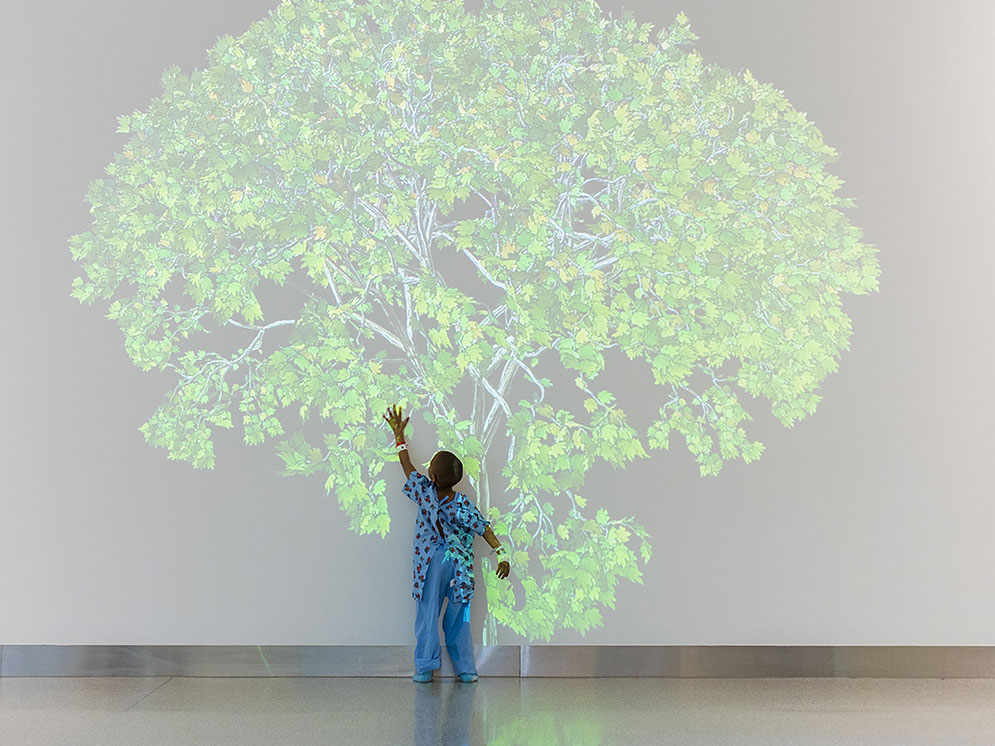
Magsamen hopes for more evidence-based principles to support the design of mental health facilities and evaluate their efficacy in helping people who use those facilities. User input will be crucial to that end. “I think the field is headed toward incorporating more feedback from the end user and personalizing spaces to individual needs,” she says.
Technology—specifically virtual reality (VR)—will also be a transformational tool for the field. “With VR, you can model a space and incorporate materiality, lighting, sound, and flow elements—and you can even begin to study the design’s impact on subjects through mobile brain/body imaging and biomarkers,” says Magsamen.
We could rethink public transit design to be more calming.
Meanwhile, CannonDesign’s Denver health practice leader, Stacey Root, envisions a future where more and more spaces are intentionally built to support well-being in general as well as a range of specific mental health outcomes. She even envisions designs crafted for prevention and mitigation of mental illness.
“We’re still mostly designing spaces for people who have already experienced a crisis. We need to invest more in deploying mental health spaces and design strategies to intervene before a crisis occurs or escalates,” Root says. Some examples she cites include creating spaces in schools that reduce stigma and soothe the mind for stressed-out children, and even rooms conducive to providing ongoing support for students struggling with mental health. Outside of schools, she envisions allocating dedicated therapeutic areas in pharmacies, retail stores, or supermarkets. She also says we could rethink public transit design to be more calming.
“A mental health design lens can be overlaid on any and all spaces. We should always be considering access to nature, improved wayfinding, reducing sensory overload and stimulation, infusing soothing colors, and more,” says Root. “The more we can design spaces with these attributes and the more we proactively create environments where users have control, the more accommodating our built environment will be to those dealing with mental health challenges.”
















